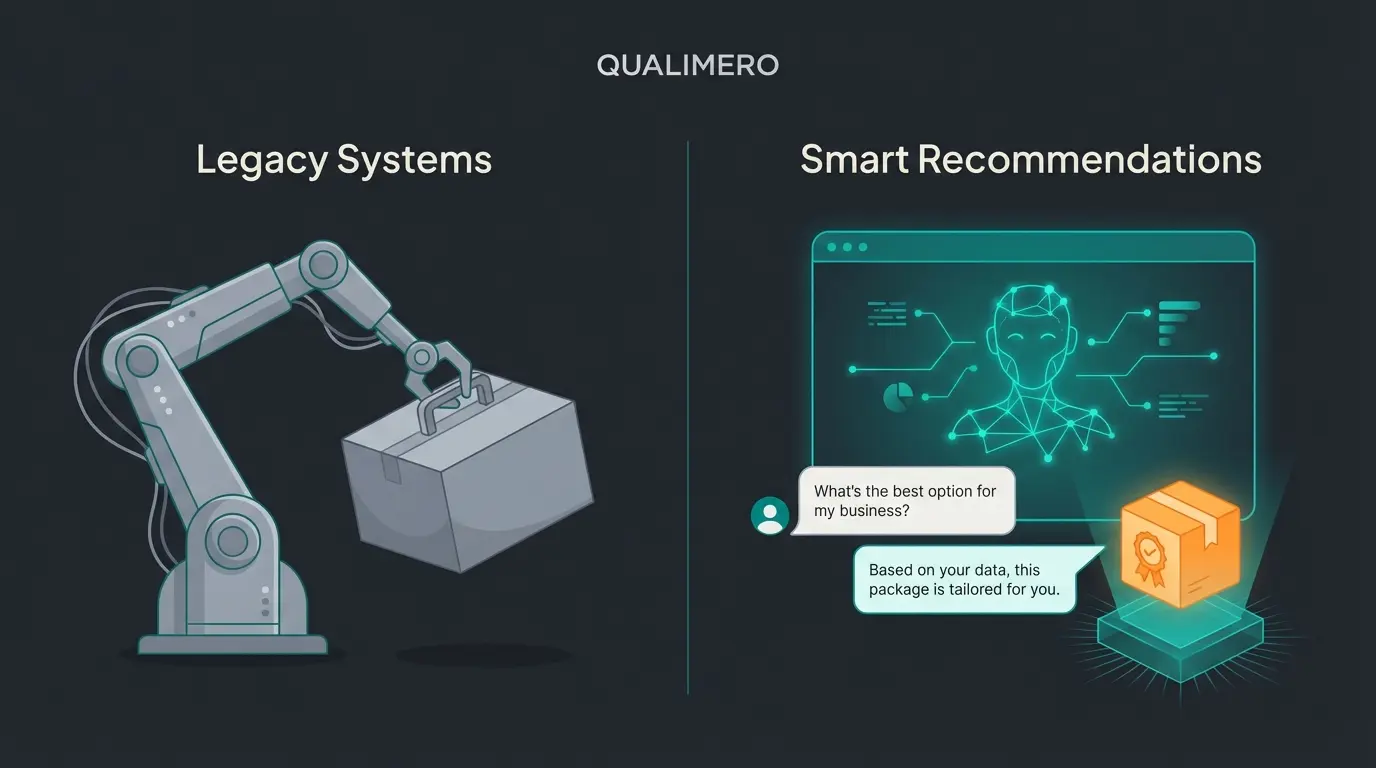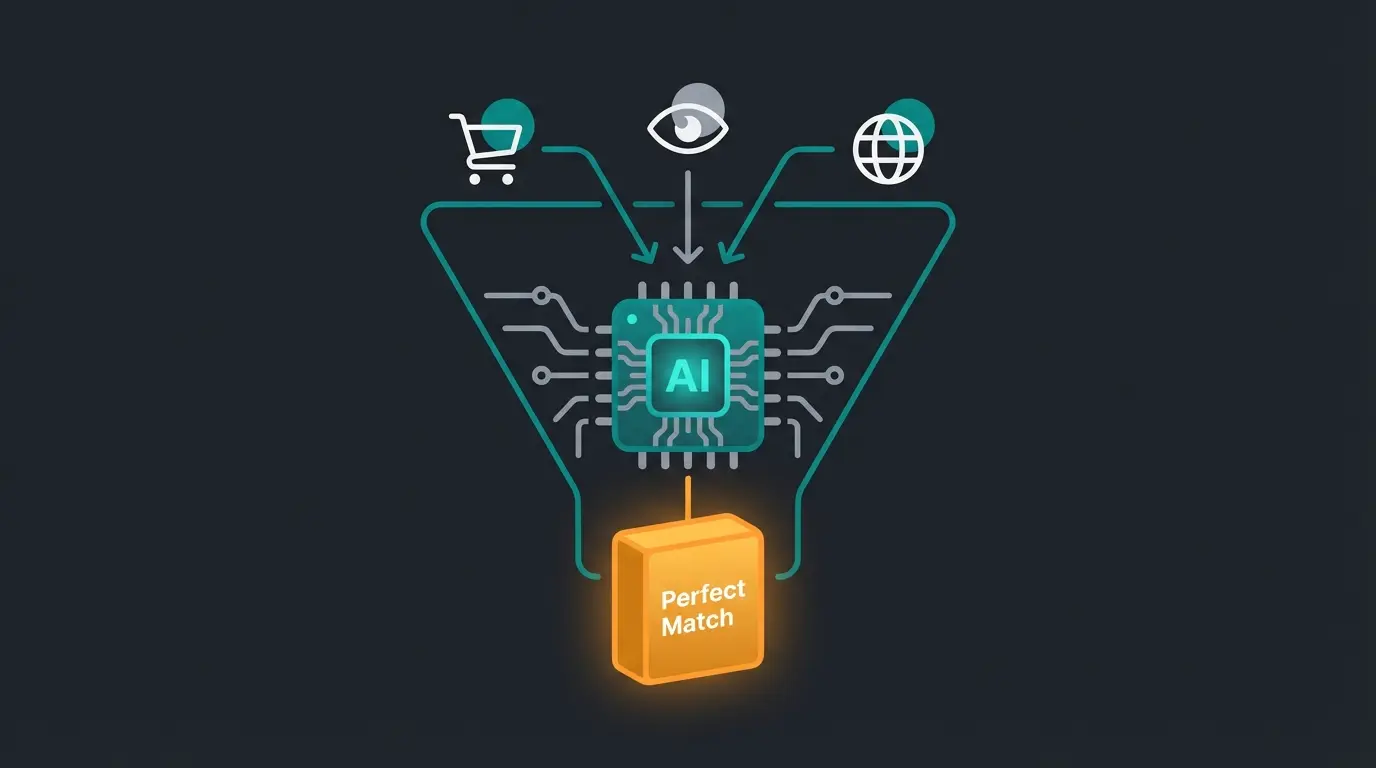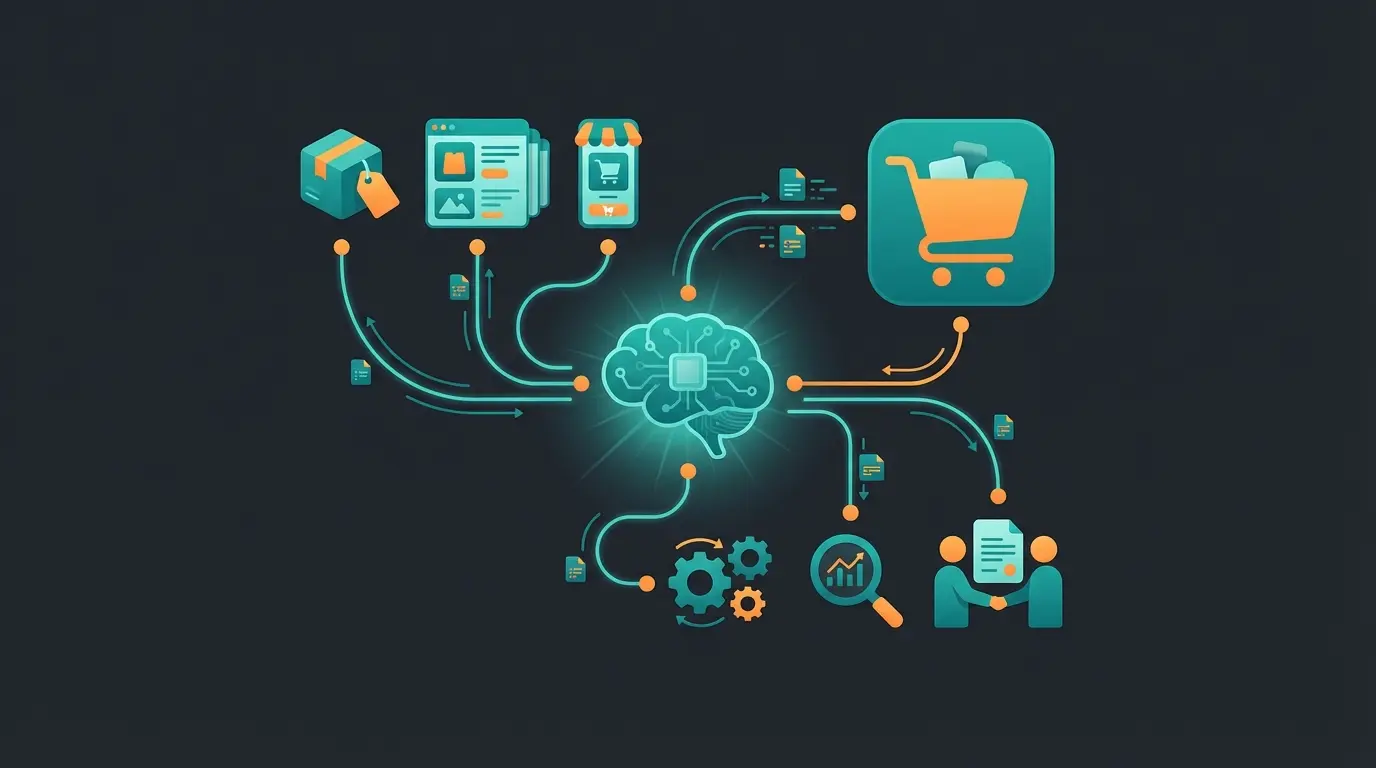What is AI Cross-Selling?
AI Cross-Selling combines artificial intelligence with proven sales strategies to revolutionize how products are recommended online. This innovative technology analyzes customer data and purchasing behavior to automatically suggest suitable additional products. However, unlike traditional cross-selling methods—which often rely on static rules—AI-supported product consultation works in real-time and continuously learns from new interactions.
The functionality is based on Machine Learning algorithms that recognize complex patterns in customer behavior. These systems consider various factors such as past purchases, browsing behavior, and demographic data. By analyzing this information, precise product recommendations are created that correspond to individual needs rather than generic assumptions.
The difference from classic cross-selling is particularly evident in the accuracy of the recommendations. While products were formerly suggested based on rigid "if-this-then-that" rules, AI adapts dynamically. It recognizes seasonal trends, reacts to changing customer preferences, and—crucially—can engage in a dialogue to understand the context of a purchase.

Current market developments in Germany and beyond show a clear trend towards AI integration in sales. More and more online retailers are relying on intelligent systems to optimize their cross-selling strategies. This development is further reinforced by improved Natural Language Processing (NLP) technologies and increasing customer acceptance of digital assistants.
The Shift: From Prediction to Consultation
To truly understand the power of AI Cross-Selling, we must distinguish between the "Old Way" (Predictive Widgets) and the "New Way" (Consultative AI). Most competitors focus on passive recommendations, but the real opportunity lies in active consultation.
| Feature | Predictive Cross-Selling (Standard) | Consultative AI (The Future) |
|---|---|---|
| Interaction Mode | Passive (Widget on page) | Active (Chat/Dialogue) |
| Data Source | Click History (Implicit) | User Answers (Explicit/Zero-Party) |
| Best Application | Low-cost, simple impulse buys | High-value, complex, considered purchases |
| User Perception | "They are tracking me." | "They are helping me." |
Benefits of AI-Supported Cross-Selling
The personalization of purchase recommendations reaches a new level through AI. According to current statistics, personalized recommendations increase sales by an average of 35%. The system analyzes not only past purchases but also current browsing behavior and other relevant data points to construct a "live" profile of the user.
Automated customer analysis enables a fast and precise assessment of purchasing potential. AI systems process large amounts of data in seconds to create detailed customer profiles. These profiles form the basis for targeted cross-selling activities that feel helpful rather than intrusive.
Average uplift from personalized recommendations
Frequency of reaction to real-time, context-aware suggestions
Reduction in operational costs via automated sales processes
Particularly valuable are product recommendations in real-time. Current ROI data shows that customers react up to 50% more frequently to recommendations presented at the exact right moment. The AI recognizes the optimal time for product suggestions—often during the consultation phase rather than just at checkout—increasing the success rate significantly.
The increase in conversion rates is impressive: companies report an increase of 20-40% through AI-supported cross-selling. This improvement results from the combination of precise customer addressing and chronologically optimized presentation. Furthermore, automated analysis and recommendation save personnel and time resources, minimizing errors in product selection and leading to an average cost saving of 30% compared to manual cross-selling processes.
Stop relying on passive widgets. Transform your store with an active AI sales consultant.
Start Free TrialTechnological Foundations: How It Works
The technological foundations of AI cross-selling are based on advanced Machine Learning processes. These enable a precise analysis of customer data and purchasing behavior. AI-supported technology processes large amounts of data in real-time, recognizing patterns that are often invisible to humans.
Machine Learning algorithms learn continuously from interactions with customers. They analyze factors such as previous purchases, browsing behavior, and demographic data. This information flows into the development of precise predictive models that forecast purchasing behavior.
AI Natural Language Processing (NLP) in Cross-Selling
Natural Language Processing (NLP) plays a central role in modern customer interaction. AI systems interpret customer inquiries and respond with matching product suggestions. They consider context, intent, and even emotional aspects of communication. This allows the system to move from "keyword matching" to true "intent understanding."
Data Management and Analysis
Structured data management forms the foundation of successful cross-selling strategies. AI systems collect and process diverse data sets:
- Transaction Data: Purchase history, shopping cart composition, purchase frequency.
- Behavioral Metrics: Click paths, dwell time, product views.
- Customer Profile Data: Preferences, demographic characteristics, communication channels.
- Market Data: Trends, seasonality, competitive information.

Strategic Implementation: Building the Consultant
A successful implementation of AI cross-selling requires a systematic approach. The integration into existing systems must be carefully planned to ensure maximum efficiency.
Technical Requirements and Integration
The technical infrastructure must be optimally prepared for AI-based cross-selling systems. This includes powerful servers, sufficient storage capacities, and fast data connections. Integration occurs gradually, respecting existing IT structures. Interfaces to CRM systems, e-commerce platforms, and ERP systems are established, ensuring compatibility with existing databases.
The Consultation Flow: A New Process
Implementing the technology is only half the battle; designing the conversation flow is the other. You need to map out how the AI engages with the user.
Customer views a core product (e.g., a Tent).
AI asks a context question: 'Planning a winter trip or a summer festival?'
User answers: 'Winter trip, freezing temperatures.'
AI suggests a specific thermal sleeping bag, explaining *why* it fits the winter plan.
GDPR-Compliant Implementation & Zero-Party Data
Data protection is a focus during implementation. All processes must meet GDPR requirements. This is where the "Consultative Approach" shines. By asking users questions directly, you are collecting Zero-Party Data—data explicitly and voluntarily given by the user. This is far more compliant and valuable than third-party tracking cookies.
Employee Training
The introduction of AI systems requires targeted training measures for employees. Staff must become familiar with the new tools and learn to optimize AI-generated recommendations. Regular training ensures the long-term success of the implementation.
Real-World Success: Best Practices & Case Studies
The integration of AI cross-selling brings measurable success to German and international companies. The online retailer Otto was able to increase its average order value by 32% through AI-supported product consultation. The automated recommendations led to a conversion rate increase of 24%.
Zalando relies on AI-based cross-selling systems for personalized fashion recommendations. The result: 45% of customers buy additional products based on AI suggestions. The purchase completion rate increased by 28% within 6 months. Similarly, MediaMarktSaturn implemented an AI system for accessory recommendations. The automatic analysis of customer behavior led to a 35% increase in the cross-selling quota, with ROI achieved after just 4 months.
Practical solutions often involve stepwise implementation. Electronics retailer Expert started with a limited product range and expanded the system after positive results, minimizing risks. Bonprix uses AI cross-selling in combination with A/B tests. Systematic evaluation of different recommendation variants led to a conversion rate optimization of 40%. Particularly effective was the integration of real-time data from customer behavior.

Summary of Success Factors
To replicate these results, keep these core principles in mind:
- Data Quality: Clean product data is the basis for precise recommendations.
- Testing: Continuous A/B testing to optimize recommendation algorithms.
- Integration: Seamless integration into existing shop systems.
- Tracking: Detailed success measurement of all cross-selling activities.
Investing in AI cross-selling pays off demonstrably. Studies indicate a 20-40% higher Customer Lifetime Value, 60% time savings in product consultation, and a significantly higher conversion rate for personalized recommendations.
Predictive Cross-Selling uses past behavior (clicks/views) to guess what a user might want (e.g., 'Customers also bought'). Consultative AI actively engages the user in a dialogue, asking questions to determine specific needs before making a recommendation.
Yes, many modern AI tools are scalable and cloud-based. While enterprise solutions exist, there are plugins and SaaS platforms specifically designed for SMBs to start leveraging machine learning without massive infrastructure costs.
Yes, if implemented correctly. Consultative AI is actually more compliant because it relies on 'Zero-Party Data'—information the user voluntarily provides during the chat—rather than invasive third-party tracking cookies.
While integration times vary, many case studies (like MediaMarktSaturn) show positive ROI within 3 to 4 months as the algorithm learns and optimizes its recommendations.
Don't just sell products—consult your customers at scale. Implement AI cross-selling today.
Get Your AI Consultation Demo
